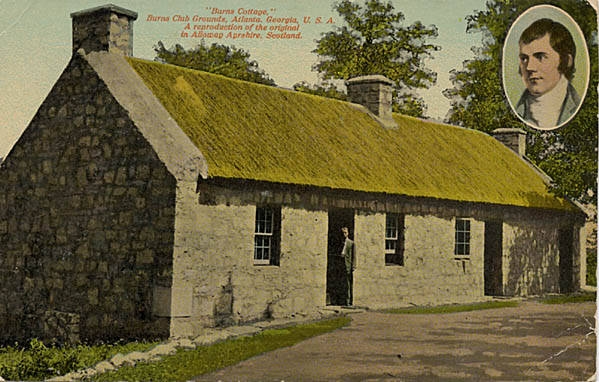
During this week in 1759, Robert Burns was born in Alloway, Ayrshire, Scotland. A writer and lyricist devoted to the representation of the lives and opinions of ordinary Scots and the assertion of Scottish cultural independence and identity, he is celebrated worldwide by people of Scottish descent on the anniversary of his birthday, January 25. In Georgia, the Burns Club of Atlanta upholds this tribute to their favorite son, and has continued this tradition since 1898. At the beginning of the twentieth century, these Atlanta-area Scots took a step further to honor the memory of Burns and his work–in 1910 members of the club researched the exact measurements of Burns’ birthplace in Scotland and built a facsimile of the structure out of Georgia granite. Burns Cottage continues to stand in Atlanta’s historic Grant Park neighborhood, where it is still under the private ownership of the Burns Club of Atlanta. The building was added to the National Register of Historic Places in 1983 (see #83003572).
The picture postcard of Burns Cottage and the Burns Club grounds seen here can be found in the Georgia Archives’ Historic Postcard Collection, RG 48-2-5; a small portrait of Burns is displayed inside a small oval inset at the top right corner of the card.


